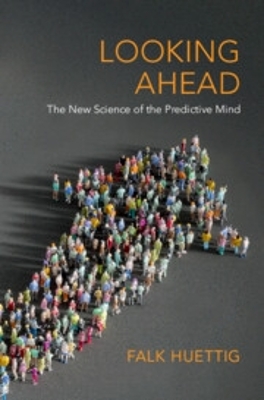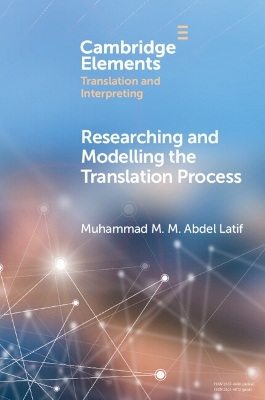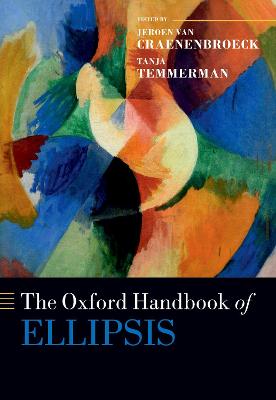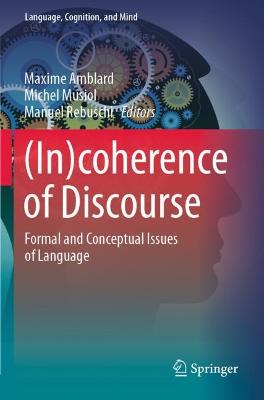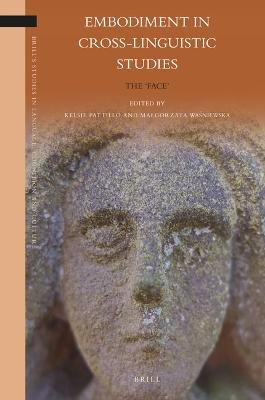Relevance Theory in Translation and Interpreting
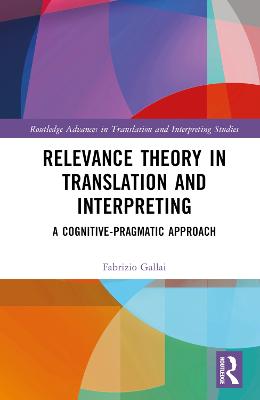 portes grátis
portes grátis
Relevance Theory in Translation and Interpreting
A Cognitive-Pragmatic Approach
Gallai, Fabrizio
Taylor & Francis Ltd
10/2022
260
Dura
Inglês
9781032025711
15 a 20 dias
Descrição não disponível.
Contents
List of abbreviations
Acknowledgements
Conventions
Preface
PART I
1 Gricean pragmatics: Meaning more than we say
1.1 Introduction
1.2 What pragmatics aims to explain
1.2.1 Sentence, utterance, proposition
1.2.2 Truth value and truth condition
1.2.3 The notion of context
1.3 Gricean theory of meaning and implicature
1.3.1 Types of meaning
1.3.2 Saying and implicating
1.3.3 The co-operative principle and its conversational maxims
1.4 Critical voices on Grice's model
1.5 Summary
1.6 Food for thought
1.6.1 Further reading
1.6.2 Review questions
1.6.3 Exercises
2 Relevance Theory: A cognitive approach to pragmatics
2.1 Introduction
2.2 Relevance, cognition, and communication
2.2.1 Relevance as a psychological property: Effects and effort
2.2.2 Two principles: Maximising and optimising relevance
2.3 The relevance-guided heuristic in (language) comprehension
2.3.1 A path of least effort and then stop
2.3.2 Explicatures
2.3.3 Only one type of implicature
2.3.4 Overall comprehension heuristic
2.4 The distinction between conceptual and procedural encodings
2.4.1 Procedural constraints on the inferential phase of comprehension
2.4.2 Discourse markers and perspective dependance
2.5 Descriptive vs interpretive utterances
2.6 Criticisms
2.7 Summary
2.8 Food for thought
2.8.1 Further reading
2.8.2 Review questions
2.8.3 Exercises
PART II
3 A relevance-theoretic model of translation
3.1 Introduction: pragmatics and translation (and interpreting) studies
3.2 Gutt's approach to translation
3.2.1 Translation as an act of interlingual interpretive use
3.2.2 Indirect vs direct translation
3.2.3 Shared communicative clues
3.2.4 Cognitive environments
3.3 Translator decision-making processes
3.3.1 Assessing communicabilty
3.3.2 Adjusting the content or the Interpretation?
3.3.3 Monitoring resemblance relations
3.3.4 Coordinating intentions and expectations of resemblance
3.3.5 Modelling translators' competence
3.4 Applications of Gutt's model in translation studies
3.4.1 The effort-effect relation
3.4.2 The role of conceptual and procedural encodings
3.4.3 Translation competence acquisition: the role of metacognition
3.4.4 Explicitation and explicitness
3.4.5 Style and figurative language
3.4.6 Irony, jokes and wordplay
3.4.7 Audiovisual translation
3.5 Interdisciplinary methods of analysis
3.5.1 Comprehension by ST and TT viewers
3.5.2 Sci-tech translation
3.5.3 Translators' metacommunicative and metapsychological processes
3.5.4 Post-editing machine translation
3.6 Criticisms
3.7 Summary
3.8 Food for thought
3.8.1 Further reading
3.8.2 Review questions
3.8.3 Exercises
4 Relevance Theory and Interpreting Studies
4.1 Introduction: interpreting and its bewildering complexity
4.2 Early cognitive models in interpreting studies
4.3 Relevance Theory and simultaneous interpreting
4.3.1 Setton's mental model
4.3.2 The quest for optimal relevance
4.3.3 Enrichment in simultaneous interpreting
4.3.4 Explicitation
4.3.5 The multimedia environment in in-vision sign language interpreting
4.3.6 Addition of discourse markers in European Parliament speeches
4.4 Insights into consecutive interpreting
4.4.1 A relevance-theoretic approach to note-taking
4.4.2 Maximizing and/or optimizing quality in CSI
4.4.3 Reducing and focusing cognitive overload
4.4.4 Procedural elements in consecutive interpreting
4.5 Dialogue interpreting and Relevance Theory
4.5.1 Mutual accessibility of contextual assumptions
4.5.2 Gallai: The illusion of an 'invisible' interpreter
4.5.3 Discourse markers in war crime trials
4.5.4 The relevance and metarelevance in interpreter-mediated courtroom proceedings
4.5.5 Relevance and metarelevance of interpreting sequences in police interviews
4.5.6 Modelling courtroom interpreters' competence: The role of clues
4.5.7 The effects of the verbalization of interpreters' inferences
4.6 Critical voices
4.7 Summary
4.8 Food for thought
4.8.1 Further reading
4.8.2 Review questions
4.8.3 Exercises
PART III
5 Relevance Theory in context: Theoretical implications and practical applications
5.1 Introduction
5.2 Theoretical implications
5.2.1 A unified definition of T&I
5.2.2 Interdisciplinary perspectives
5.3 Testing Relevance Theory in mediated communication
5.3.1 Expanding methodologies: triangulation
5.3.2 Integrating product and process
5.3.3 Experimental testing
5.4 Issues in translation and interpreting practitioner (and service user) training and practice
5.4.1 Meta-/cross-pragmatic competence as a mental faculty
5.4.2 Ensuring quality: interpretive resemblance plus relevance
5.4.3 Implicit and explicit competence
5.4.4 The role of clues and procedural meaning
5.4.5 Cognitive efficiency
5.4.6 Monitoring skills
5.4.7 Language proficiency enhancement
5.4.8 Ethical implications
5.5 Summary
6 Future directions
6.1 Introduction
6.2 The quest for unitary, Relevance Theory-oriented models of translation and interpreting
6.3 Promoting interchange between descriptive and applied relevance-theoretic pragmatics
6.4 Conclusion
Glossary on key notions of Relevance Theory and Relevance Theory-oriented translation and interpreting studies
References
Index
List of abbreviations
Acknowledgements
Conventions
Preface
PART I
1 Gricean pragmatics: Meaning more than we say
1.1 Introduction
1.2 What pragmatics aims to explain
1.2.1 Sentence, utterance, proposition
1.2.2 Truth value and truth condition
1.2.3 The notion of context
1.3 Gricean theory of meaning and implicature
1.3.1 Types of meaning
1.3.2 Saying and implicating
1.3.3 The co-operative principle and its conversational maxims
1.4 Critical voices on Grice's model
1.5 Summary
1.6 Food for thought
1.6.1 Further reading
1.6.2 Review questions
1.6.3 Exercises
2 Relevance Theory: A cognitive approach to pragmatics
2.1 Introduction
2.2 Relevance, cognition, and communication
2.2.1 Relevance as a psychological property: Effects and effort
2.2.2 Two principles: Maximising and optimising relevance
2.3 The relevance-guided heuristic in (language) comprehension
2.3.1 A path of least effort and then stop
2.3.2 Explicatures
2.3.3 Only one type of implicature
2.3.4 Overall comprehension heuristic
2.4 The distinction between conceptual and procedural encodings
2.4.1 Procedural constraints on the inferential phase of comprehension
2.4.2 Discourse markers and perspective dependance
2.5 Descriptive vs interpretive utterances
2.6 Criticisms
2.7 Summary
2.8 Food for thought
2.8.1 Further reading
2.8.2 Review questions
2.8.3 Exercises
PART II
3 A relevance-theoretic model of translation
3.1 Introduction: pragmatics and translation (and interpreting) studies
3.2 Gutt's approach to translation
3.2.1 Translation as an act of interlingual interpretive use
3.2.2 Indirect vs direct translation
3.2.3 Shared communicative clues
3.2.4 Cognitive environments
3.3 Translator decision-making processes
3.3.1 Assessing communicabilty
3.3.2 Adjusting the content or the Interpretation?
3.3.3 Monitoring resemblance relations
3.3.4 Coordinating intentions and expectations of resemblance
3.3.5 Modelling translators' competence
3.4 Applications of Gutt's model in translation studies
3.4.1 The effort-effect relation
3.4.2 The role of conceptual and procedural encodings
3.4.3 Translation competence acquisition: the role of metacognition
3.4.4 Explicitation and explicitness
3.4.5 Style and figurative language
3.4.6 Irony, jokes and wordplay
3.4.7 Audiovisual translation
3.5 Interdisciplinary methods of analysis
3.5.1 Comprehension by ST and TT viewers
3.5.2 Sci-tech translation
3.5.3 Translators' metacommunicative and metapsychological processes
3.5.4 Post-editing machine translation
3.6 Criticisms
3.7 Summary
3.8 Food for thought
3.8.1 Further reading
3.8.2 Review questions
3.8.3 Exercises
4 Relevance Theory and Interpreting Studies
4.1 Introduction: interpreting and its bewildering complexity
4.2 Early cognitive models in interpreting studies
4.3 Relevance Theory and simultaneous interpreting
4.3.1 Setton's mental model
4.3.2 The quest for optimal relevance
4.3.3 Enrichment in simultaneous interpreting
4.3.4 Explicitation
4.3.5 The multimedia environment in in-vision sign language interpreting
4.3.6 Addition of discourse markers in European Parliament speeches
4.4 Insights into consecutive interpreting
4.4.1 A relevance-theoretic approach to note-taking
4.4.2 Maximizing and/or optimizing quality in CSI
4.4.3 Reducing and focusing cognitive overload
4.4.4 Procedural elements in consecutive interpreting
4.5 Dialogue interpreting and Relevance Theory
4.5.1 Mutual accessibility of contextual assumptions
4.5.2 Gallai: The illusion of an 'invisible' interpreter
4.5.3 Discourse markers in war crime trials
4.5.4 The relevance and metarelevance in interpreter-mediated courtroom proceedings
4.5.5 Relevance and metarelevance of interpreting sequences in police interviews
4.5.6 Modelling courtroom interpreters' competence: The role of clues
4.5.7 The effects of the verbalization of interpreters' inferences
4.6 Critical voices
4.7 Summary
4.8 Food for thought
4.8.1 Further reading
4.8.2 Review questions
4.8.3 Exercises
PART III
5 Relevance Theory in context: Theoretical implications and practical applications
5.1 Introduction
5.2 Theoretical implications
5.2.1 A unified definition of T&I
5.2.2 Interdisciplinary perspectives
5.3 Testing Relevance Theory in mediated communication
5.3.1 Expanding methodologies: triangulation
5.3.2 Integrating product and process
5.3.3 Experimental testing
5.4 Issues in translation and interpreting practitioner (and service user) training and practice
5.4.1 Meta-/cross-pragmatic competence as a mental faculty
5.4.2 Ensuring quality: interpretive resemblance plus relevance
5.4.3 Implicit and explicit competence
5.4.4 The role of clues and procedural meaning
5.4.5 Cognitive efficiency
5.4.6 Monitoring skills
5.4.7 Language proficiency enhancement
5.4.8 Ethical implications
5.5 Summary
6 Future directions
6.1 Introduction
6.2 The quest for unitary, Relevance Theory-oriented models of translation and interpreting
6.3 Promoting interchange between descriptive and applied relevance-theoretic pragmatics
6.4 Conclusion
Glossary on key notions of Relevance Theory and Relevance Theory-oriented translation and interpreting studies
References
Index
Este título pertence ao(s) assunto(s) indicados(s). Para ver outros títulos clique no assunto desejado.
Fabrizio Gallai;cognitive science;pragmatics;interpreting studies;translation studies;Relevance Theory;SC's Interest;TA's Treatment;Cognitive Pragmatic Approaches;Interpretive Resemblance;Complete Interpretive Resemblance;Contextual Assumptions;CTIS;Optimal Relevance;Cognitive Environments;TPR.;Ostensive Stimuli;Communicative Clues;Gricean Pragmatics;Conversational Implicatures;Procedural Meaning;Semantics Pragmatics Distinction;Rt Study;TT Reader;Frayed Thread;Particularised Conversational Implicatures;Grice's Ideas;TS Scholar;Conventional Implicatures;Interlingual Communication;TPR
Contents
List of abbreviations
Acknowledgements
Conventions
Preface
PART I
1 Gricean pragmatics: Meaning more than we say
1.1 Introduction
1.2 What pragmatics aims to explain
1.2.1 Sentence, utterance, proposition
1.2.2 Truth value and truth condition
1.2.3 The notion of context
1.3 Gricean theory of meaning and implicature
1.3.1 Types of meaning
1.3.2 Saying and implicating
1.3.3 The co-operative principle and its conversational maxims
1.4 Critical voices on Grice's model
1.5 Summary
1.6 Food for thought
1.6.1 Further reading
1.6.2 Review questions
1.6.3 Exercises
2 Relevance Theory: A cognitive approach to pragmatics
2.1 Introduction
2.2 Relevance, cognition, and communication
2.2.1 Relevance as a psychological property: Effects and effort
2.2.2 Two principles: Maximising and optimising relevance
2.3 The relevance-guided heuristic in (language) comprehension
2.3.1 A path of least effort and then stop
2.3.2 Explicatures
2.3.3 Only one type of implicature
2.3.4 Overall comprehension heuristic
2.4 The distinction between conceptual and procedural encodings
2.4.1 Procedural constraints on the inferential phase of comprehension
2.4.2 Discourse markers and perspective dependance
2.5 Descriptive vs interpretive utterances
2.6 Criticisms
2.7 Summary
2.8 Food for thought
2.8.1 Further reading
2.8.2 Review questions
2.8.3 Exercises
PART II
3 A relevance-theoretic model of translation
3.1 Introduction: pragmatics and translation (and interpreting) studies
3.2 Gutt's approach to translation
3.2.1 Translation as an act of interlingual interpretive use
3.2.2 Indirect vs direct translation
3.2.3 Shared communicative clues
3.2.4 Cognitive environments
3.3 Translator decision-making processes
3.3.1 Assessing communicabilty
3.3.2 Adjusting the content or the Interpretation?
3.3.3 Monitoring resemblance relations
3.3.4 Coordinating intentions and expectations of resemblance
3.3.5 Modelling translators' competence
3.4 Applications of Gutt's model in translation studies
3.4.1 The effort-effect relation
3.4.2 The role of conceptual and procedural encodings
3.4.3 Translation competence acquisition: the role of metacognition
3.4.4 Explicitation and explicitness
3.4.5 Style and figurative language
3.4.6 Irony, jokes and wordplay
3.4.7 Audiovisual translation
3.5 Interdisciplinary methods of analysis
3.5.1 Comprehension by ST and TT viewers
3.5.2 Sci-tech translation
3.5.3 Translators' metacommunicative and metapsychological processes
3.5.4 Post-editing machine translation
3.6 Criticisms
3.7 Summary
3.8 Food for thought
3.8.1 Further reading
3.8.2 Review questions
3.8.3 Exercises
4 Relevance Theory and Interpreting Studies
4.1 Introduction: interpreting and its bewildering complexity
4.2 Early cognitive models in interpreting studies
4.3 Relevance Theory and simultaneous interpreting
4.3.1 Setton's mental model
4.3.2 The quest for optimal relevance
4.3.3 Enrichment in simultaneous interpreting
4.3.4 Explicitation
4.3.5 The multimedia environment in in-vision sign language interpreting
4.3.6 Addition of discourse markers in European Parliament speeches
4.4 Insights into consecutive interpreting
4.4.1 A relevance-theoretic approach to note-taking
4.4.2 Maximizing and/or optimizing quality in CSI
4.4.3 Reducing and focusing cognitive overload
4.4.4 Procedural elements in consecutive interpreting
4.5 Dialogue interpreting and Relevance Theory
4.5.1 Mutual accessibility of contextual assumptions
4.5.2 Gallai: The illusion of an 'invisible' interpreter
4.5.3 Discourse markers in war crime trials
4.5.4 The relevance and metarelevance in interpreter-mediated courtroom proceedings
4.5.5 Relevance and metarelevance of interpreting sequences in police interviews
4.5.6 Modelling courtroom interpreters' competence: The role of clues
4.5.7 The effects of the verbalization of interpreters' inferences
4.6 Critical voices
4.7 Summary
4.8 Food for thought
4.8.1 Further reading
4.8.2 Review questions
4.8.3 Exercises
PART III
5 Relevance Theory in context: Theoretical implications and practical applications
5.1 Introduction
5.2 Theoretical implications
5.2.1 A unified definition of T&I
5.2.2 Interdisciplinary perspectives
5.3 Testing Relevance Theory in mediated communication
5.3.1 Expanding methodologies: triangulation
5.3.2 Integrating product and process
5.3.3 Experimental testing
5.4 Issues in translation and interpreting practitioner (and service user) training and practice
5.4.1 Meta-/cross-pragmatic competence as a mental faculty
5.4.2 Ensuring quality: interpretive resemblance plus relevance
5.4.3 Implicit and explicit competence
5.4.4 The role of clues and procedural meaning
5.4.5 Cognitive efficiency
5.4.6 Monitoring skills
5.4.7 Language proficiency enhancement
5.4.8 Ethical implications
5.5 Summary
6 Future directions
6.1 Introduction
6.2 The quest for unitary, Relevance Theory-oriented models of translation and interpreting
6.3 Promoting interchange between descriptive and applied relevance-theoretic pragmatics
6.4 Conclusion
Glossary on key notions of Relevance Theory and Relevance Theory-oriented translation and interpreting studies
References
Index
List of abbreviations
Acknowledgements
Conventions
Preface
PART I
1 Gricean pragmatics: Meaning more than we say
1.1 Introduction
1.2 What pragmatics aims to explain
1.2.1 Sentence, utterance, proposition
1.2.2 Truth value and truth condition
1.2.3 The notion of context
1.3 Gricean theory of meaning and implicature
1.3.1 Types of meaning
1.3.2 Saying and implicating
1.3.3 The co-operative principle and its conversational maxims
1.4 Critical voices on Grice's model
1.5 Summary
1.6 Food for thought
1.6.1 Further reading
1.6.2 Review questions
1.6.3 Exercises
2 Relevance Theory: A cognitive approach to pragmatics
2.1 Introduction
2.2 Relevance, cognition, and communication
2.2.1 Relevance as a psychological property: Effects and effort
2.2.2 Two principles: Maximising and optimising relevance
2.3 The relevance-guided heuristic in (language) comprehension
2.3.1 A path of least effort and then stop
2.3.2 Explicatures
2.3.3 Only one type of implicature
2.3.4 Overall comprehension heuristic
2.4 The distinction between conceptual and procedural encodings
2.4.1 Procedural constraints on the inferential phase of comprehension
2.4.2 Discourse markers and perspective dependance
2.5 Descriptive vs interpretive utterances
2.6 Criticisms
2.7 Summary
2.8 Food for thought
2.8.1 Further reading
2.8.2 Review questions
2.8.3 Exercises
PART II
3 A relevance-theoretic model of translation
3.1 Introduction: pragmatics and translation (and interpreting) studies
3.2 Gutt's approach to translation
3.2.1 Translation as an act of interlingual interpretive use
3.2.2 Indirect vs direct translation
3.2.3 Shared communicative clues
3.2.4 Cognitive environments
3.3 Translator decision-making processes
3.3.1 Assessing communicabilty
3.3.2 Adjusting the content or the Interpretation?
3.3.3 Monitoring resemblance relations
3.3.4 Coordinating intentions and expectations of resemblance
3.3.5 Modelling translators' competence
3.4 Applications of Gutt's model in translation studies
3.4.1 The effort-effect relation
3.4.2 The role of conceptual and procedural encodings
3.4.3 Translation competence acquisition: the role of metacognition
3.4.4 Explicitation and explicitness
3.4.5 Style and figurative language
3.4.6 Irony, jokes and wordplay
3.4.7 Audiovisual translation
3.5 Interdisciplinary methods of analysis
3.5.1 Comprehension by ST and TT viewers
3.5.2 Sci-tech translation
3.5.3 Translators' metacommunicative and metapsychological processes
3.5.4 Post-editing machine translation
3.6 Criticisms
3.7 Summary
3.8 Food for thought
3.8.1 Further reading
3.8.2 Review questions
3.8.3 Exercises
4 Relevance Theory and Interpreting Studies
4.1 Introduction: interpreting and its bewildering complexity
4.2 Early cognitive models in interpreting studies
4.3 Relevance Theory and simultaneous interpreting
4.3.1 Setton's mental model
4.3.2 The quest for optimal relevance
4.3.3 Enrichment in simultaneous interpreting
4.3.4 Explicitation
4.3.5 The multimedia environment in in-vision sign language interpreting
4.3.6 Addition of discourse markers in European Parliament speeches
4.4 Insights into consecutive interpreting
4.4.1 A relevance-theoretic approach to note-taking
4.4.2 Maximizing and/or optimizing quality in CSI
4.4.3 Reducing and focusing cognitive overload
4.4.4 Procedural elements in consecutive interpreting
4.5 Dialogue interpreting and Relevance Theory
4.5.1 Mutual accessibility of contextual assumptions
4.5.2 Gallai: The illusion of an 'invisible' interpreter
4.5.3 Discourse markers in war crime trials
4.5.4 The relevance and metarelevance in interpreter-mediated courtroom proceedings
4.5.5 Relevance and metarelevance of interpreting sequences in police interviews
4.5.6 Modelling courtroom interpreters' competence: The role of clues
4.5.7 The effects of the verbalization of interpreters' inferences
4.6 Critical voices
4.7 Summary
4.8 Food for thought
4.8.1 Further reading
4.8.2 Review questions
4.8.3 Exercises
PART III
5 Relevance Theory in context: Theoretical implications and practical applications
5.1 Introduction
5.2 Theoretical implications
5.2.1 A unified definition of T&I
5.2.2 Interdisciplinary perspectives
5.3 Testing Relevance Theory in mediated communication
5.3.1 Expanding methodologies: triangulation
5.3.2 Integrating product and process
5.3.3 Experimental testing
5.4 Issues in translation and interpreting practitioner (and service user) training and practice
5.4.1 Meta-/cross-pragmatic competence as a mental faculty
5.4.2 Ensuring quality: interpretive resemblance plus relevance
5.4.3 Implicit and explicit competence
5.4.4 The role of clues and procedural meaning
5.4.5 Cognitive efficiency
5.4.6 Monitoring skills
5.4.7 Language proficiency enhancement
5.4.8 Ethical implications
5.5 Summary
6 Future directions
6.1 Introduction
6.2 The quest for unitary, Relevance Theory-oriented models of translation and interpreting
6.3 Promoting interchange between descriptive and applied relevance-theoretic pragmatics
6.4 Conclusion
Glossary on key notions of Relevance Theory and Relevance Theory-oriented translation and interpreting studies
References
Index
Este título pertence ao(s) assunto(s) indicados(s). Para ver outros títulos clique no assunto desejado.
Fabrizio Gallai;cognitive science;pragmatics;interpreting studies;translation studies;Relevance Theory;SC's Interest;TA's Treatment;Cognitive Pragmatic Approaches;Interpretive Resemblance;Complete Interpretive Resemblance;Contextual Assumptions;CTIS;Optimal Relevance;Cognitive Environments;TPR.;Ostensive Stimuli;Communicative Clues;Gricean Pragmatics;Conversational Implicatures;Procedural Meaning;Semantics Pragmatics Distinction;Rt Study;TT Reader;Frayed Thread;Particularised Conversational Implicatures;Grice's Ideas;TS Scholar;Conventional Implicatures;Interlingual Communication;TPR


